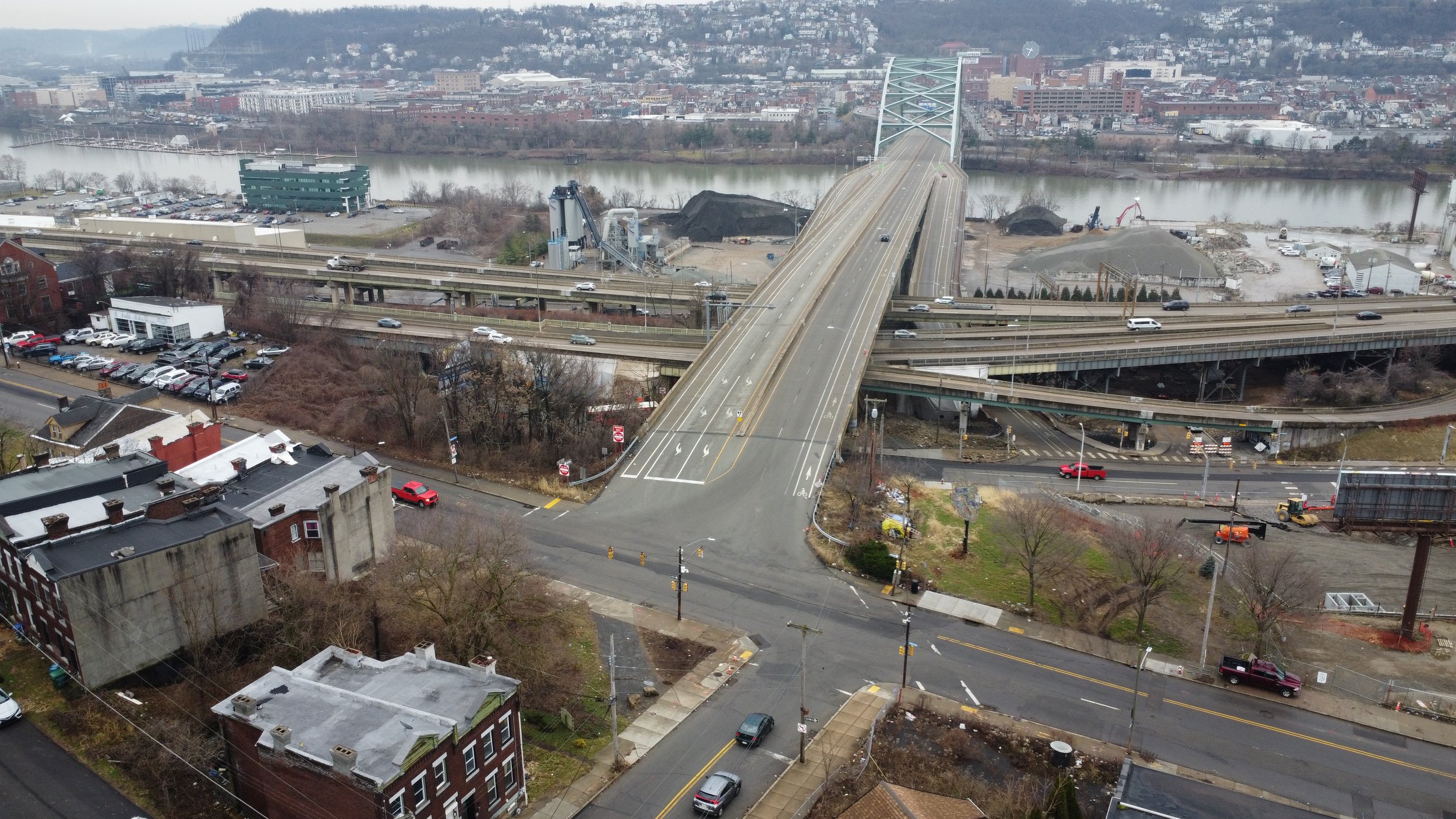Pedestrian Killed on the Birmingham Bridge
What happened: On January 11th, a driver hit and killed a pedestrian at the north end of the Birmingham Bridge. News reports have been unclear on where the crash happened, but video showed police blocking off the southbound approach to the bridge off of Forbes Avenue.
Where it happened: The Birmingham Bridge is…just a mess. I mean, look at it:
The top level approach comes off of Fifth Avenue, which flies over the Boulevard of the Allies, which flies over the approaches off of Forbes Avenue, which fly over the Parkway East, which flies over Second Avenue. Also, Brady Street is located under all of that somewhere. We often compare stuff like this to an octopus, but this is like an octopus on top of a squid on top of a cuttlefish.
This freeway-integrated bridge design is inherently anti-pedestrian, which may be why a South Side sister project, the Carson Street Expressway, was cancelled. This project would have destroyed one of the city’s most vibrant and pedestrian-friendly neighborhoods. The Birmingham Bridge began construction before the expressway was cancelled, and the nub ends of the ramps on the south side of the bridge show where this crisis was averted.
From a bicycle perspective, the bridge actually isn’t that bad; all approaches from the north have bike lanes, and while it may not be the best solution, there are green-painted merge areas where bike lanes have to cross a travel lane. The pedestrian experience is another story. The bridge does have sidewalks, but they are only accessible from Forbes Avenue; if someone wanted to cross the bridge on foot from Fifth Avenue, they would have to add an extra 800 feet or so to their travel to take the designated route. While details from news reports have been light, the placement of police vehicles on the bridge suggests that the pedestrian chose not to use the designated route and instead used the shortest route, walking along the bike lanes from Fifth Avenue to where the Forbes Avenue approach joins the main deck, and then tried to cross the Forbes Avenue approach to get to the sidewalk, but never made it.
How to fix it: The Birmingham Bridge suffers from a common problem on the bridges of Pittsburgh, and that is that drivers treat them like short highway segments. The Birmingham Bridge is about 2/3 of a mile long and has three lanes on either side. While the speed limit is marked at 35 miles per hour (at least on the northbound lanes, there is no speed limit signage on the southbound lanes), it’s easy to reach much higher speeds in that distance, and the width of the bridge encourages this sort of speeding. Even at 35 miles per hour, if a driver hits a pedestrian, that pedestrian’s chances of severe injury are about 65%, and the chance of death is about 30%.
The way to fix this is threefold: eliminate conflict points; provide adequate pedestrian infrastructure; and reduce vehicle speeds. Conflict points can be eliminated either by providing some sort of pedestrian bridge over merging vehicular lanes, or by eliminating the bridge access from one of the roads to the north, probably Forbes Avenue. Putting sidewalks on the Fifth Avenue approach seems like a basic addition, but they wouldn’t be much good without conflict control at the Forbes Avenue approaches, so some sort of signal, either a full stop cycle or at least a pedestrian-activated signal, would be necessary. This would also reduce speeds on the bridge, as vehicles would have to come to a stop before merging and would have less time and distance to reach a dangerous speed. Lane narrowing would further reduce speed. But all of this needs to follow a change of mindset at PennDOT; the safety of vulnerable road users must be prioritized over the throughput of cars.
Who to call: The Birmingham Bridge is owned by PennDOT District 11. You can submit concerns online, or call at (412) 429-5000. For funding and political support, contact State Representative Aerion Abney by email or by calling (412) 471-7760; State Representative Jessica Benham by email or by calling (412) 881-4208; and State Senator Jay Costa by email or by calling (412) 241-6690.



